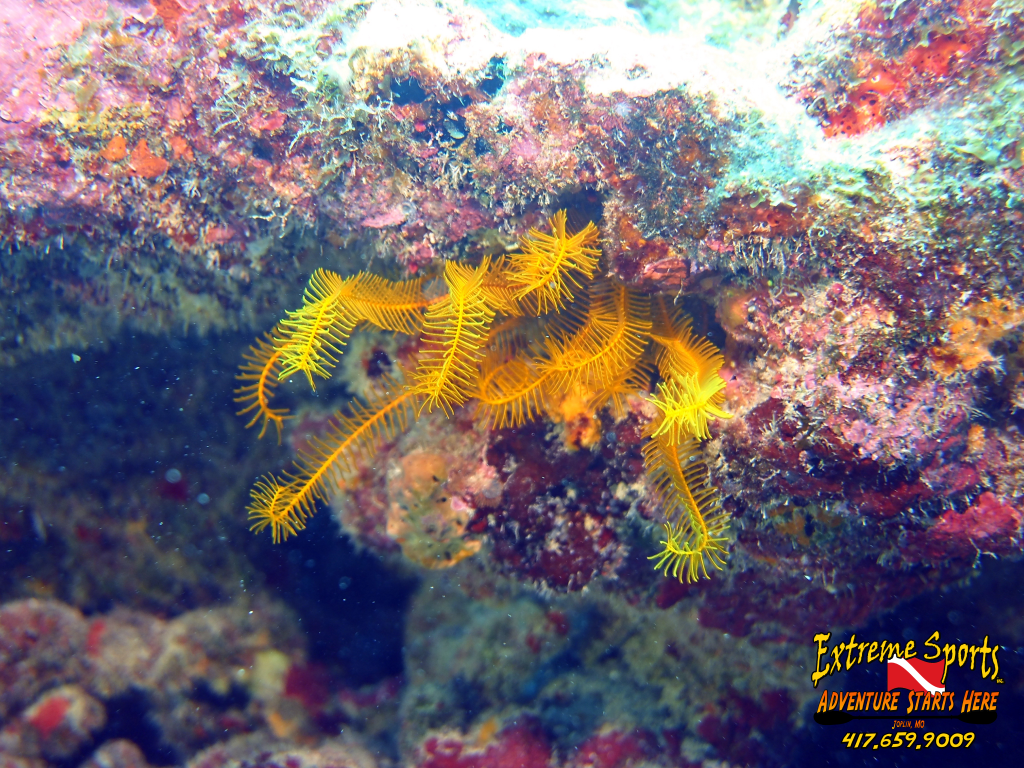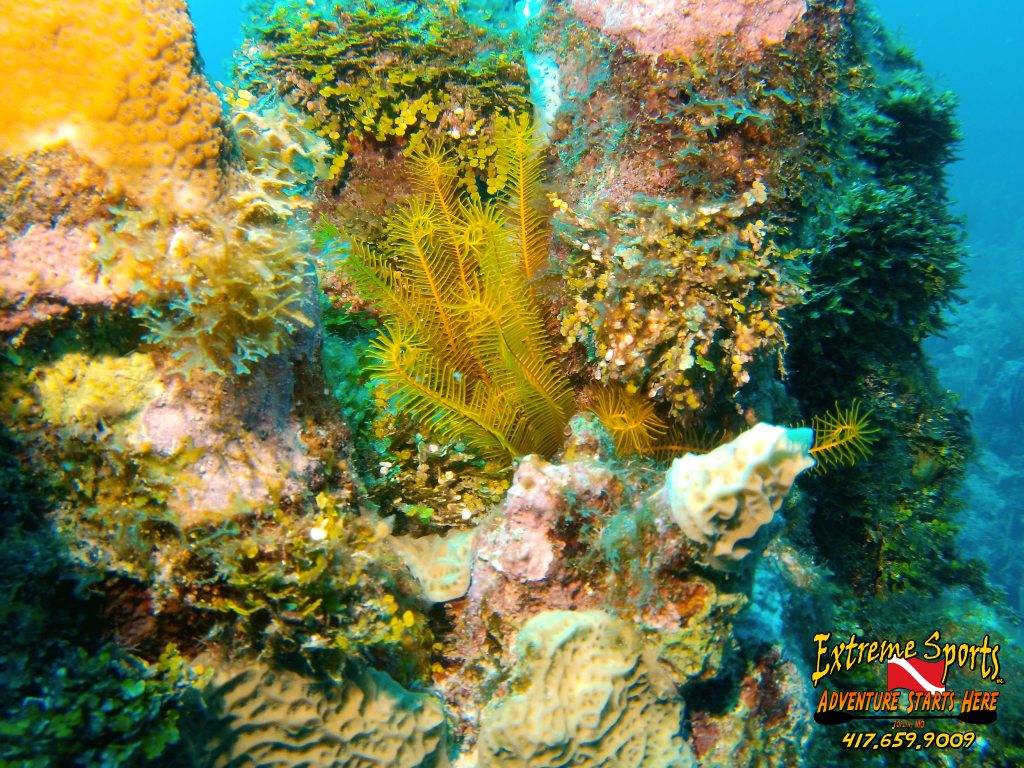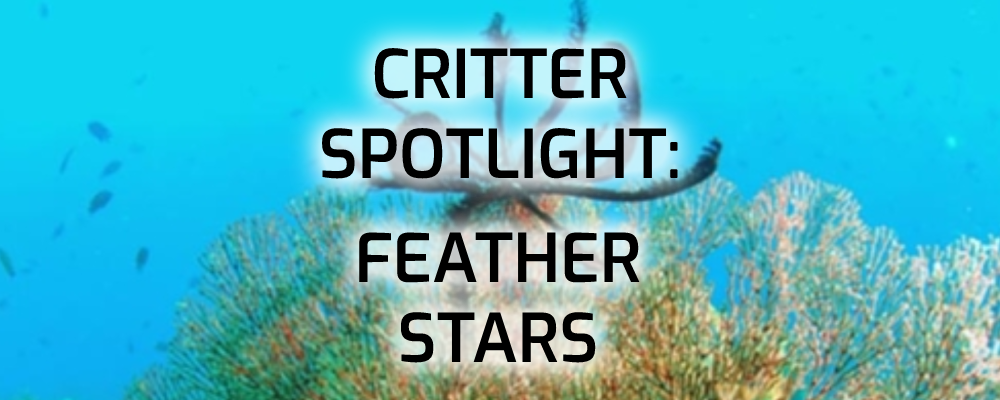Animal awareness is awesome! Learning about the living things that you may encounter while diving is key to ensuring that the interactions you have with marine life are safe and healthy. Within this blog series, we will discuss a variety of animals, as well as how to find them and why they are unique. Here at Extreme Sports Inc., we are ecstatic to explore underwater diversity with you, and we hope that you gain more knowledge and appreciation for aquatic life with us!
Today, we are highlighting the feather star! Feather stars are common invertebrates that you will likely encounter on ocean dives of any depth. They are docile filter feeders that play a very good game of hide and seek most of the time. Sometimes sporting bright neon colors, feather stars are wonderful creatures to look at.
New Author Alert:
Hi! My name is Dayle Chasten and I am obsessed with wildlife, especially underwater. I began diving in 2020 and I have been helping out at Extreme Sports Inc. for a little over a year. I am a biology conservation major at MSSU, where I also work in a reptile physiology lab. For me, diving has opened up a whole new world to admire wildlife. I am very excited to share this passion, and I can’t wait to learn more from the diving community as well. If you have questions or just enjoy talking about wildlife as much as I do, leave a comment!
What is a feather star?
A feather star, sometimes called a sea lily, is a marine animal that looks like a bundle of feathers or a fern plant, and is usually mostly hidden within coral or rock crevices. They appear in the fossil record around 450 million years ago. Being an invertebrate, these animals do not have any bones. Their feather-like appendages are radially symmetrical, meaning they can be dissected into even proportions along five lines extending from the center, like a star. These characteristics are why they are classified as Crinoids, which is a class of Echinoderms that also includes sea urchins, starfish, and brittle stars.
Feather stars typically have arms in multiples of five, and can have anywhere between five arms and hundreds of arms! Each arm has two rows of branching projections called pinnules that give them the “feather” appearance. Similar to the suction cup-like feet of a starfish, feather star arms and pinnules are equipped with minuscule tube feet that are useful for grasping and feeding. Feather stars feed on microscopic organisms such as plankton and brine shrimp that drift by in the current. Sometimes, feather stars are eaten by fish and sea urchins.
Feather stars can swim! Similar to an octopus, they gracefully sweep their arms up and down in an alternating pattern that is oh-so mesmerizing to watch. I definitely suggest finding a video of this on youtube!

Where to find feather stars.
Residing in both shallow and deep waters, the feather star is found in nearly all oceans of the world. They are very common in tropical areas and some species even tolerate colder regions. So wherever you’re headed to next, keep an eye out for these neat little stars!
Often times, feather stars hangout in the cracks and crevices of coral and rocks, with only their feathery arms stretching out from their hiding place. On your next ocean dive, be sure to scan the walls and structures around you for feather stars; especially near the tops of vertical walls exposed to more current, as this is the star’s favorite place to catch meals drifting by. While it may be tempting to touch the arms of the star, remember to respect wildlife, give them space, and admire from afar.

Why I Like Feather Stars.
I first learned about feather stars in a biology class at school. I was always captivated by their unique characteristics and ability to persist in many ecosystems over time. Plus, they are so pretty! I never thought I would see one in person, and I was thrilled when a divemaster in Belize pointed one out. Its arms were gently curling and waving in the current and it looked so fragile. The bright yellow stars that we were finding contrasted beautifully against the rock and coral. Now, I always look for and appreciate these simple, calming animals.
Finding smaller, quirky critters like this can add variety to a dive, and enhances your marine life expertise!
Good ways to Find Out more about aquatic life.
At Extreme Sports, we offer the marine ecosystems awareness from SDI. Divers have a vested interest in protecting the marine environment. In many cases, divers do not have environmental information about local sites. This specialty is designed to increase the open water diver’s understanding of marine and freshwater environments, the problems facing these unique ecosystems, and the role that diver’s play in protecting our marine resources.
Consult local dive shops! Wherever you plan on traveling to, dive shops will certainly have the expertise that every diver should consider taking advantage of. Ask many questions and get involved. Building personal relationships with dive leads is the best way to get the most out of your dives, and often times inspires them to share more of their favorite aquatic life with you!
I also suggest following facebook groups and profiles that are aquatic life or diving based. Here you can find multitudes of pictures and information to enjoy and learn about! Online platforms are an amazing place to discuss your ideas with people that share the same interests. Networking is also helpful in building confidence in aquatic life identification, as well as finding out what you would like to look for.
These are some of the profiles and sources that we follow:
-SDI
– Scubapro
-National Geographic
– Cozumel Marine World
– Divers Alert Network (DAN)
other blog posts:
Selecting the Right SCUBA Mask
it’s just important! What is the most important piece of...
Read MoreTop Gifts for Scuba Divers
Our List Scuba divers always have a need for something...
Read More1st Stage Turrets – Why?
Jumping back in history Looking back in time at Scubapro’s...
Read MoreMeet the Scubapro Caravan Bag
before the caravan Through out the years I have traveled...
Read More



